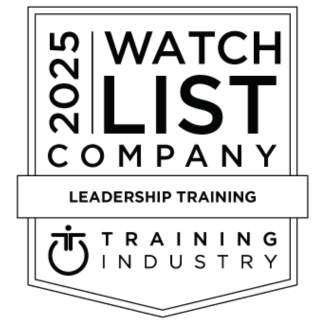Let’s be real: change isn’t on the horizon. It’s continually knocking at your door, and it’s not letting up anytime soon.
From geopolitical upheaval and economic uncertainty on a global scale, to evolving team dynamics and new tech rollouts on a micro-level, today’s leaders are navigating a constant stream of change. The ones who succeed aren’t the ones with all the answers. They’re the ones who can pivot, stay grounded, and bring their teams with them.
They’re adaptive leaders.
Adaptability is more than a personality trait. It’s a skill set, a mindset, and a practice you can build.
In this post, we’re diving into what makes an adaptive leader, why resilience alone isn’t enough anymore, and what practical tools you can use to lead with clarity and confidence in the face of change. Think of it as your adaptive leadership toolkit, something you can pull from when things get uncertain (which, let’s be real, is most of the time).
So, What Is an Adaptive Leader, Really?
Adaptive leaders are the ones who stay steady when plans fall apart. They’re quick to adjust, open to input, and committed to learning, especially when things don’t go as expected.
Why Resilience Isn’t the Whole Story
We hear a lot about resilience and for good reason. It’s essential. But it’s important to remember that resilience gets you through, adaptability moves you forward.
And right now, leaders need both.
The danger of focusing only on resilience is that it can become a badge of burnout, where people keep pushing through without any meaningful shift in approach or support. Adaptability says, “Let’s pause, learn, adjust, and try again.”
Resilience vs. Adaptability: What’s the Difference?
| Resilience | Adaptability |
| Bouncing back from setbacks | Shifting direction in response to change |
| Withstanding pressure or adversity | Adjusting mindset, behavior, or strategy |
| Grounded in persistence | Grounded in flexibility |
| Focused on recovery | Focused on evolution |
| Internal strength | External responsiveness |
| Often individual in nature | Often team- or system-oriented |
| “How do I keep going?” | “What do I need to change?” |
How Adaptive Leaders Create Stronger, More Flexible Teams
The good news? You don’t need to overhaul your entire leadership style. Small, intentional shifts can have a big ripple effect. Adaptive leaders foster team cultures that are grounded but not rigid, where people feel safe, supported, and ready to take on what’s next.
Here’s what they tend to do well:
- Model vulnerability: They’re honest about what they don’t know and what they’re learning.
- Create psychological safety: Teams know it’s okay to test, fail, and iterate.
- Embrace feedback: They treat feedback as fuel, not a threat.
- Build trust through transparency: Even in uncertainty, they communicate clearly and consistently.
These are the adaptive leadership skills that not only keep teams grounded, but also keep them moving forward.

The Adaptive Leadership Toolkit
Here’s a no-fluff, ready-to-use toolkit you can start applying today. Whether you lead a team of 3 or 300, these strategies help build trust, flexibility, and forward momentum.
Getting Started: Three Small Moves That Make a Big Difference
- Check your mindset: Ask yourself, Where am I clinging to control? How do I respond to the unexpected?
- Start the conversation: Bring your team into the process. Try, What helps you stay adaptable? What holds us back from pivoting when needed?
- Experiment, don’t overhaul: Pick one toolkit strategy to pilot with your team, and reflect on what you learn.
Final Thought: You Don’t Have to Have It All Figured Out
Adaptability doesn’t mean knowing the perfect move in every moment. It means staying flexible, being willing to take action without all the information, and creating space for your team to do the same.
And that’s what leadership looks like now.
Want more resources to grow your leadership impact?
Enjoyed this post? You might also like…











